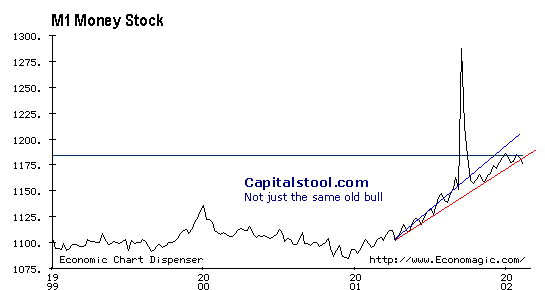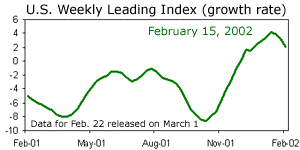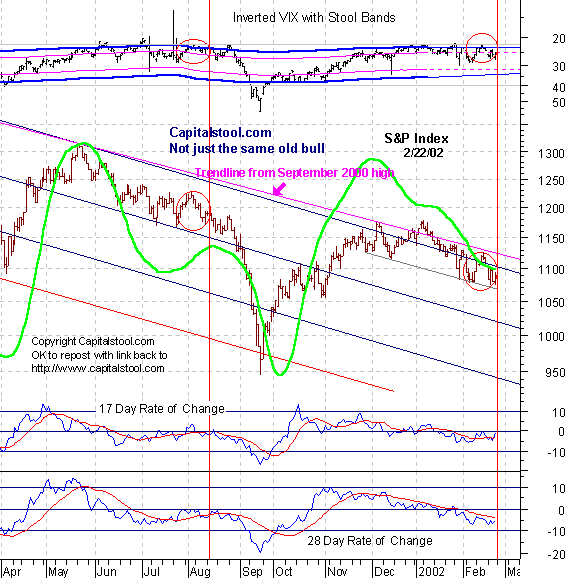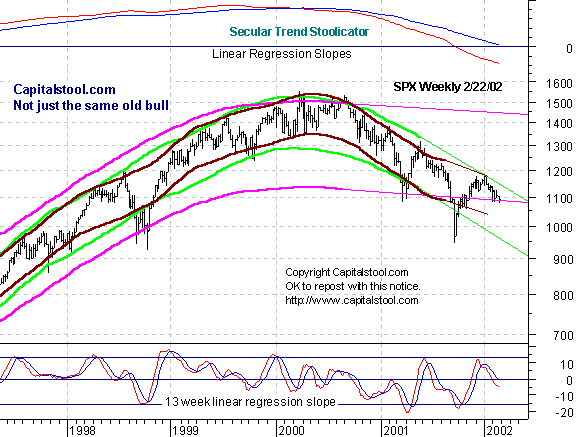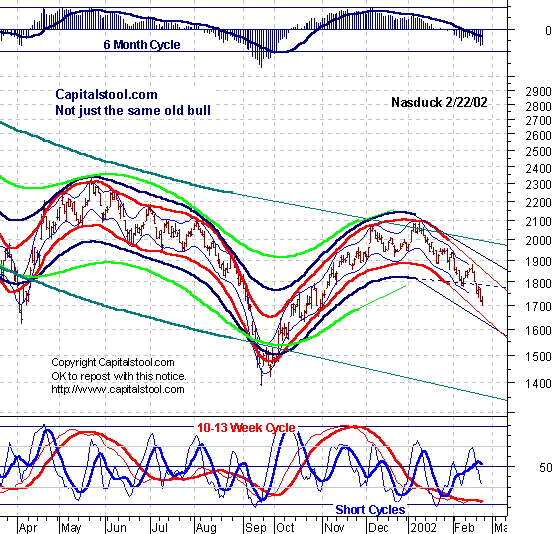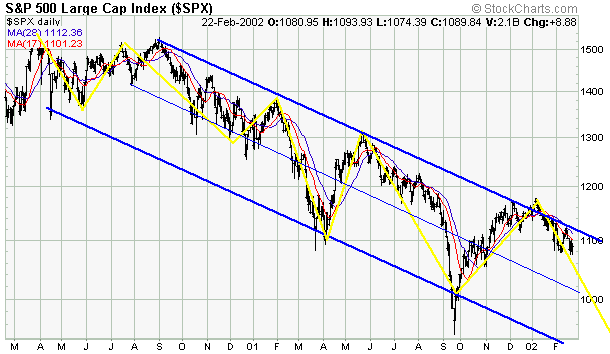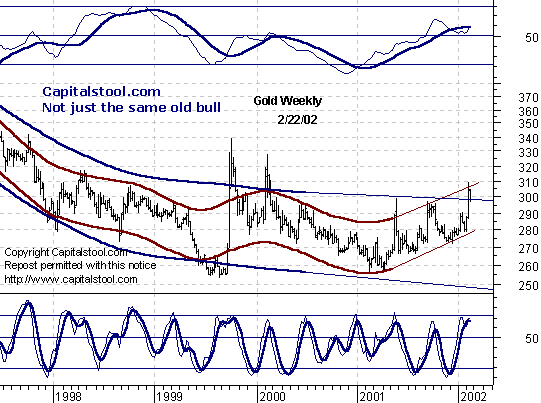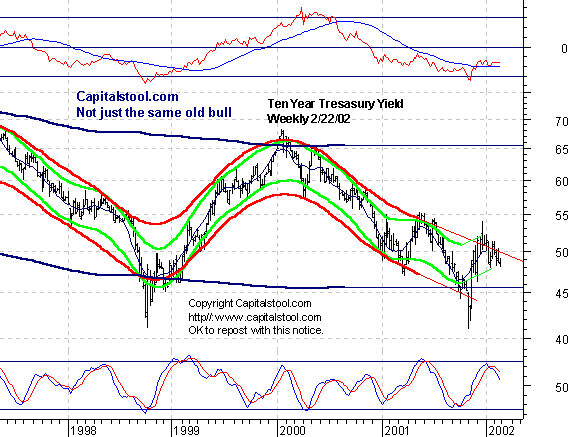|
[menu.htm]
|
The Anals of Stock ProctologyPublished 5 times
per week by the American Academy of Stock Proctology and Available by annual subscription for $1929. (Just kidding, details to follow.) Welcome to the The Anals of Stock Proctology, the new scholarly journal of the American Academy of Stock Proctology, edited by the world famous founder of the study of Stock Proctology, Dr. Stepan N. Stool PHandD. The Anals replaces Capitalstool's nightly and weekend updates of the major stock indexes. Now you can get your nightly stock proctology report in one convenient, uncluttered page, right here. The Anals will be available for free, for the immediate future. Some time between now and March 15, however, all advertising and solicitation will be removed from the Anals, and access to the Anals will be restricted to subscribers. As a result of the clean format, the Anals will be readily printable for reading in locations more appropriate to such endeavors, such as, uh, the kitchen table. Yes. The remainder of the site, including The Stool Pigeons Wire, IntradayStool, Stoolhoo, and Stoolchat, will continue to be free. You will never have to pay for access to these pages. Previous contributors to Capitalstool will receive a free subscription period. Prior to going to a subscription format, the voluntary pay buttons will remain. So feel free to contribute now. Your contribution will result in a full credit toward your future subscription. Several of you have already contributed in excess of $500, and you will receive a free lifetime subscription. Contributors of written content or illustrations used on the Capitalstool front page will also receive free subscriptions. That includes all who achieve the level of Professor of Stock Proctology on the Stool Pigeons Wire. Initial subscription rates will be $19.29 for a 3 month trial and $74 per year thereafter, in honor of the great bear markets of the 20th century. As always I thank you for your support, and I look forward to many prosperous years working together with you. Dr. Stepan N. Stool February 19, 2002
It looked for just a little while late Friday that the Dow was going to give the Finger Formation (as in , "YO! D'you jus' gimme da finger!?) on the intraday chart. But it was not to be, as a last minute flurry of short covering saved the day for the bulls, and for the stage managers of the Dow Jokes Inflatable Average (Thanks to stoolie Floater for the new name!). Once again we see the principle of chart height at work here. In a healthy up market, the Nasty would have the tallest chart, and the Dow Jokes the shortest. Once again, as you can see, the stage managers of the Dow Jokes drove the arithmetically weighted average by stampeding one or two of its highest priced stocks. The DJ has the tallest chart, while the high octane Nas has a chart that's all scrunched up. This is stage management by the specialists who control the Dow, and their portfolio sphincter partners in crime, who are trying to trick you into leaving your dwindling assets under their control. True, the technicalities of the principle of chart height may be difficult to grasp, but take my word for it, the market is not tall like the Dow. Anyone who looks at his or her mutual fund prices on a regular basis does not feel tall. The Dow has been in an up phase for 17 days. That's about the shelf life for these things in this market. This "up" has manifest as a trading range, aka the "dreaded sideways up phase." They're dreaded because they are typically followed by a plunge, in this case probably below the neckline of a good looking head and shoulders. The stage managers know that a lot is at stake here. They know that once the Dow drops below 9500, the dumping will begin in earnest. Wisdom of the Poodits In the ongoing exercise of reviewing daily poodit commentary in one big pile, where it belongs, here is today's poodit wisdom. Pay attention to the subtle difference between remarks coming from the buy side of the Street, and the sell side. [Dr. Stool's comments in brackets] Buy Side Poodits Portfolio Sphincters "The unfortunate thing for the bull case right now is that the economy is probably out of recession, but now this accounting cloud is really holding things back,'' said Nat Paull, portfolio manager at New Amsterdam Partners. [Oops, double dip coming. Earnings, what earnings?] Jeffrey Kleintop, chief investment advisor at PNC Advisors- ``Investors are just going to be content to sit on the sidelines.' [I'm out of cash.] If history is any guide, the S&P 500 will test the area around 1,069, giving up about half of the gains it made from three-year lows hit on Sept. 21 to the recent highs of early January." [Wonder which history he's looking at?] There's a negative sentiment and anything negative ... in the accounting area could knock the market down,'' said David Dreman, chairman and chief investment officer of Dreman Value Management, which oversees about $7.5 billion. ``Even if the economic news is only slightly less favorable than expected or slightly under estimates, that could have dampening effect.'' [Even if the news is good.] Sell Side Poodits Strat-ego-ists "Balance sheets are probably going to look a lot worse than people think,'' David Bowers, chief global strategist at Merrill Lynch & Co., said in an interview. [What the hell's the matter with him? He told the truth.] It's hard to make money in this kind of environment," remarked Barry Hyman, chief investment strategist at Ehrenkrantz King Nussbaum. "Next week will be a key one to see whether the market has the ability to focus on the economic picture. If the market shows that ability, it'll be able to stabilize," he added. [He's worried the news will be good, but that the market might drop anyway.] "The market's confusion is reflected in the day's volatility. It's schizophrenic. It's a constant tug-of-war between the improving economy and balance sheet and valuation worries," said Peter Boockvar, equity strategist at Miller, Tabak & Co. [Oh, sure, that's what the day traders are worried about all right. It's nervous short covering running into overhead supply, you moron.] "It's shaping up to be one of those years when the most important thing will be what you don't do rather than what you do [do]," observed Frank Gretz, chief strategist at Shields & Co. What seems extremely clear is that you don't want to be in tech. Stocks that lead in one cycle simply don't come back to lead in the next. And the bigger the boom or bubble, the bigger and longer the bust. Had you bought Coca-Cola at the end of 1972 -- one of the 'nifty-fifty' -- you wouldn't have gotten your money back until 1985. And unlike today's tech stocks, Coke back then increased its earnings every year. [Oops, he's one of us. How'd he get in there?] ``The real question is: Is it sustainable? And, the answer is, no,'' said Hugh Johnson, chief investment officer at First Albany Corp. [Give a big hand to that Huge Johnson! He's great with the sound bites. AND, he's back on our team. Switch hitter.] Technical Analcysts ``Folks are just saying, `The heck with it. Why should I watch things go down any further?,'' said Richard A. Dickson, technical analyst for Hilliard Lyons in Louisville, Ky. [So I'll just close my eyes and not look.] "In a nutshell, you have a market that's still overvalued relative to earnings. On top of that, investors feel they can't trust those earnings. So why would investors want to buy stocks?" said Charles Comer, technical strategist at IDEAglobal. [Yeah, that's it in a nutshell. Now go back to your charts! ]. Others NYSE Specialist "You could make a case for the bull and the bear," Peter Mancuso, a New York Stock Exchange specialist with Performance Specialist Group [Ayyy! I ain't carryin' nuttin' overnight!] Summary There you have it. Friday was the day for truth telling. The froth of just a few weeks ago is gone that's for sure. We're in the reality stage now, a suddenly the chorus that said the accounting issues were just a passing phase has been silenced. But there's very little outright bearishness. Gloomy, yes. They spent months plowing every penny that had into stocks, and now they're beginning to wake up to the fact that they screwed up again. That's the process that converts buyers to holders. But sentiment will become a lot more pessimistic in the weeks ahead, and eventually those holders will become sellers. At the bottom of course. |
|||||||||||||||||||||||||||||||||||
|
The Feed and The Market The FOMC under FBI* Director Al Greenspew, was active last week, adding $8.3 billion to holdings of repurchase agreements and $2.3 billion to government securities held outright, for a net cash infusion of $10.6 billion to the banking system and the markets. You would have never known it from the behavior of stock prices. *Financial Bubble Inc. Over the next 15 days the Fed will need to replace $58 billion in loans and repos coming due. Let's say that's $28 billion per week, plus some pocket change to maintain the targeted growth rate. Seems they are targeting growth of about 1% per month in the monetary base. And we thought the Fed's job was to fight inflation! Not this time. Anything substantially more than $28 billion and some pocket change means the Fed is jamming. However, they've been jamming since last April, and it hasn't done a helluva lot. We must admit it probably has prevented one or more horrendous crashes in the market. Now, however, the patient is beginning to reject the transfusions. The Fed has direct control over the Adjusted Monetary base. They are moving it up at a trend growth rate of about 12% annually. Policy has been aggressively inflationary since April of last year. That's when the real feeding began.
Contrary to poopular opinion, the Fed has a lot less control over M1. There are signs here that the Al and the gang are having trouble overcoming the credit crunch in commercial lending. If this baby isn't growing, make no mistake, we should be looking for a stock market collapse to go hand in hand..
The Fed has virtually no influence over M3. M3 is governed by the GSE's, Fannie, Freddie, and the FHLMC. (If you are not reading the Credit Bubble Bulletin, start!) The unlimited power to create credit results in an ongoing credit bubble, primarily driving and, in turn, driven by, the residential housing market. All that's required are borrowers ready, willing, and able to buy up, and/or take cash out of equity via refinancing. So the mortgage credit bubble looks like the chart below, and it is the only thing keeping the world economy and financial markets from crashing into oblivion. The bubble shifted into a higher gear in late 1999, and then again late in 2000. It now stands on the cusp of either reaccelerating or slowing.
There are ominous signs that the bubble is ending. Median home sales prices have stopped growing. As of year end 2001, the latest available data, prices are at virtually the same level they were in June. And last week the Mortgage bankers Association had this to say about mortgage applications, the lifeblood of this bubble.
This is in spite of the fact that mortgage rates remain near multi year lows. These are ominous signs.
Meanwhile, the credit bubble and Fed feeding are not helping the stock markets much at all, small cap or large. To put it bluntly, those who argue that you should buy stocks because of the Fed easing, i.e. "Don't fight the Fed," are full of crap. Admittedly, they did get a small cap bubble out of the monetary explosion following September 11, but the Russell 2000 is in the process of unwinding that bubble, and it remains within its longer term downtrend path.
The Portfolio Sphincters Index is actually below where it was when the Fed began panicking in April of 2001. The trend is alive and well, and the principle of regression to the mean lives, as well. I don't see a bull market here. Do you see a bull market here?
Finally, I want to pass on this little chart from the ECRI.
All the Feeding has worked it's way through the system, and we are at the top of the greatest credit bubble in the history of the world. What do we have to show for it? And what, pry tell can the Fed do for an encore? SPX Charts The VIX, a sentiment indicator based on options volatility, closed Friday at 24.89, still indicating the relative complacency typical of the early stages of a downtrend. The picture remains remarkably like last summer. Momentum is terrible, and has room to get a LOT worse. No two periods are exactly alike, but from a cyclic perspective the market is about where it was last August, with sentiment and momentum are at virtually identical levels. Freaky, huh?
The index is resting on a projection of the lower secular trend cycle band on the weekly chart. We still don't know what the ultimate slope of that will be. One more test of the lower channel of the 4 year cycle band (green) would be needed before that is determined. One thing is certain. The next cyclical bull, whenever it may come around, will not reach the levels of the last one. But it should be good for a trade.
The Cycle Conditions tables include cycle phase and a wild guess as to number of periods to the next turn, in days for the shortest cycles, weeks (W) or months (M) for the longer ones. This is a fluid exercise, in other words, the projections are likely to be wrong, but they force us to be vigilant for key turning points, and frequently work well enough to prevent costly misreadings of the market. SPX Cycle Conditions as of 2/22/02
PTT - Periods Till Turn Nasdaq Charts The weekly chart shows the Nas still in the upper quarter of its downtrend channel, with an intermediate low at least a month away. A lot of damage can be done in a month. The weakest part of the intermediate cycle is the last few weeks, with downside momentum likely to increase dramatically.
The Nas is trending in a tight range. If the last 5 weeks were a short term cycle up phase, as indicated by the short cycle oscillator, I can't wait to see the down . Nasdaq Cycle Conditions as of 2/22/02
PTT
- Periods Till Turn Getting Sentimental A number of bears have expressed concern about high readings in the put/call ratio, which they fear indicates there's too much fear in the market. Typical! Fearful bears fearing too much fear! Let me puts your mind at ease about all the puts volume. Sentiment is all about trends and cycles. The mood swings of the crowd are what cycles are all about. The chart below illustrates the point elegantly. It's a little tricky because the put call ratio runs inversely to the direction of stock prices. The put call is notoriously volatile on a daily basis. But if you run the 17 and 28 day moving averages, which Dr. Stool likes because they approximate half the span of the 6-7 and 10-13 week swing cycles, the cyclicality becomes evident. The chart also illustrates that sentiment follows the trend. What is extreme? Extremes shift with the market trend, and you CANNOT know what is extreme, until after the market reverses. A market may look extreme (Dover Sole) and the bottom may only be 3 days in the future, but a market in a vertical dive will wipe out your account in 3 days. In this case, traders looking for a bottom because the put call is above 1.0 on any given day are going to be very disappointed, as this phase appears to have at least a month to six weeks to run.
Golden Stool A couple of months of consolidation would be normal as gold enters an intermediate cycle down phase in the early stages of a bull market. . Long Bong Hit This is interesting. The weekly chart of the 10 Year Treasury Yield shows yields in an intermediate down phase, near the low of the secular trend channel. Over the weekend the Treasury announced an enormous sale of 2 year notes. Let's see what that does. This pullback in yields could end at any time. But for now, they continue to track with the stock market. Ring-around-the-rosie continues. See you in Intraday Stool. Let us know what you think on the Stool Pigeons Wire. Archive |

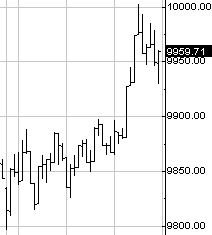
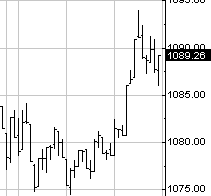
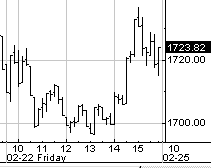
![[Most Recent XAU from www.kitco.com]](http://www.weblinks247.com/indexes/idx24_nasdaq_en_2.gif)
![[Most Recent XAU from www.kitco.com]](http://www.weblinks247.com/indexes/idx24_sp500_en_2.gif)


